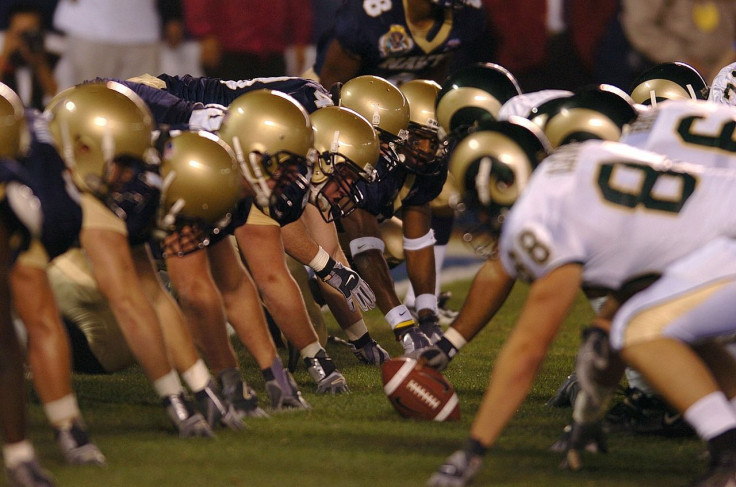NFL Concussion Research Is Flawed, Says Report; Experts Compare It To Tobacco Industry

Concussions are an all-too-common occurrence for football players, regardless of whether they play for a National Football League (NFL) team or junior varsity — contact sports are linked to an increased risk for injury. In 2003, though, the NFL launched its own investigation into the matter and concluded head injuries weren’t a huge deal. The New York Times, however, reported the NFL relied on faulty data that doesn't even scratch the surface of the problem.
The NFL stood by its research for over a decade, claiming it was based on concussions diagnosed by the league’s physicians from 1996 to 2001. However, the Times reported 100 concussions were left out of the study, including some sustained by very popular players. This means the league used incomplete data to calculate concussion rates, which creates the illusion that concussions happen less than they really do.
League officials told the Times that some clubs were not required to submit their data. In their own statement, the NFL admitted their research process could have been clearer, but they maintain the missing cases were not an attempt "to alter or suppress the rate of concussions."
One member on the NFL's initial concussion committee said he was unaware of the omissions.
"If somebody made a human error or somebody assumed the data was absolutely correct and didn’t question it, well, we screwed up," said Dr. Joseph Waeckerle. "If we found it wasn’t accurate and still used it, that’s not a screw up; that’s a lie."
The findings appeared in 13 peer-reviewed articles, all to support the NFL’s claim that concussions did not lead to long-term harm to players. But in 2013, the league agreed to pay retired players accusing the league of hiding the risks of concussions a total of $765 million — some asked the NFL to appeal and reexamine the 2003 research. Since then, many people have compared the NFL to the tobacco industry, which is infamous for using sketchy science to downplay the health effects of cigarettes.
"The NFL is not the tobacco industry; it had no connection to the tobacco industry," a lawyer for the NFL told The Times.
Obviously, concussions cannot be compared with smoking. Smoking kills 1,300 people every day in the U.S., and there is no evidence the NFL got its strategy from Big Tobacco. However, records show the two industries share lawyers, consultants, and lobbyists. Dinner invitations and requests for advice also suggest personal friendships.
Regardless of how it happened, even the harshest critics of the NFL have never suggested such an egregious omission of data.
"One of the rules of science is that you need to have impeccable data collection procedures," said Bill Par, a neuropsychologist previously employed with the Jets. "You’re not doing science here; you are putting forth some idea that you already have."
Published by Medicaldaily.com



























